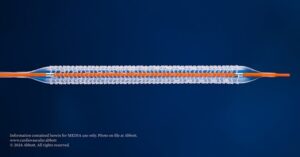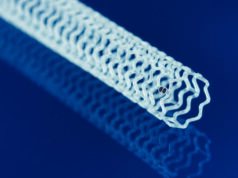
Health Canada has authorised the Esprit BTK everolimus-eluting resorbable scaffold system for the treatment of below-the-knee (BTK) chronic limb-threatening ischaemia (CLTI), Abbott revealed today in a press release.
Until this recent Health Canada approval for the Esprit BTK system, Abbott notes that the standard of care has been balloon angioplasty. However, the company notes that treatment with balloon angioplasty alone can have poor short- and long-term results, and—in many instances—the vessels do not remain patent, requiring additional treatment.
Abbott describes the Esprit BTK system as a first-of-its-kind stent that is designed to keep arteries patent and deliver everolimus to support vessel healing prior to completely dissolving.
At the 2024 Vascular InterVentional Advances (VIVA) conference (3–6 November, Las Vegas, USA), Abbott released late-breaking two-year results from the LIFE-BTK trial. The trial demonstrated that, compared to balloon angioplasty, the Esprit BTK system results in improved patient outcomes and 48% fewer repeat procedures over the study period.

“Health Canada’s approval of Abbott’s Esprit BTK system marks a significant milestone in our fight against peripheral arterial disease below the knee and represents a new era of improved outcomes for people worldwide,” said Brian DeRubertis (New York Presbyterian-Weill Cornell Medical Center, New York, USA), one of the principal investigators of the LIFE-BTK trial. “Abbott is changing the landscape of CLTI therapy by introducing a treatment option that is superior to balloon angioplasty.”
“At Abbott, we’ve recognised the significant burden of disease and limited treatment options for people living with the most severe form of PAD—treatments that typically include high-risk surgery or less invasive options that come with limitations,” said Julie Tyler, senior vice president of Abbott’s vascular business. “Our revolutionary below-the-knee resorbable scaffold technology meets an unmet need that will ultimately help people with PAD live better and fuller lives.”












